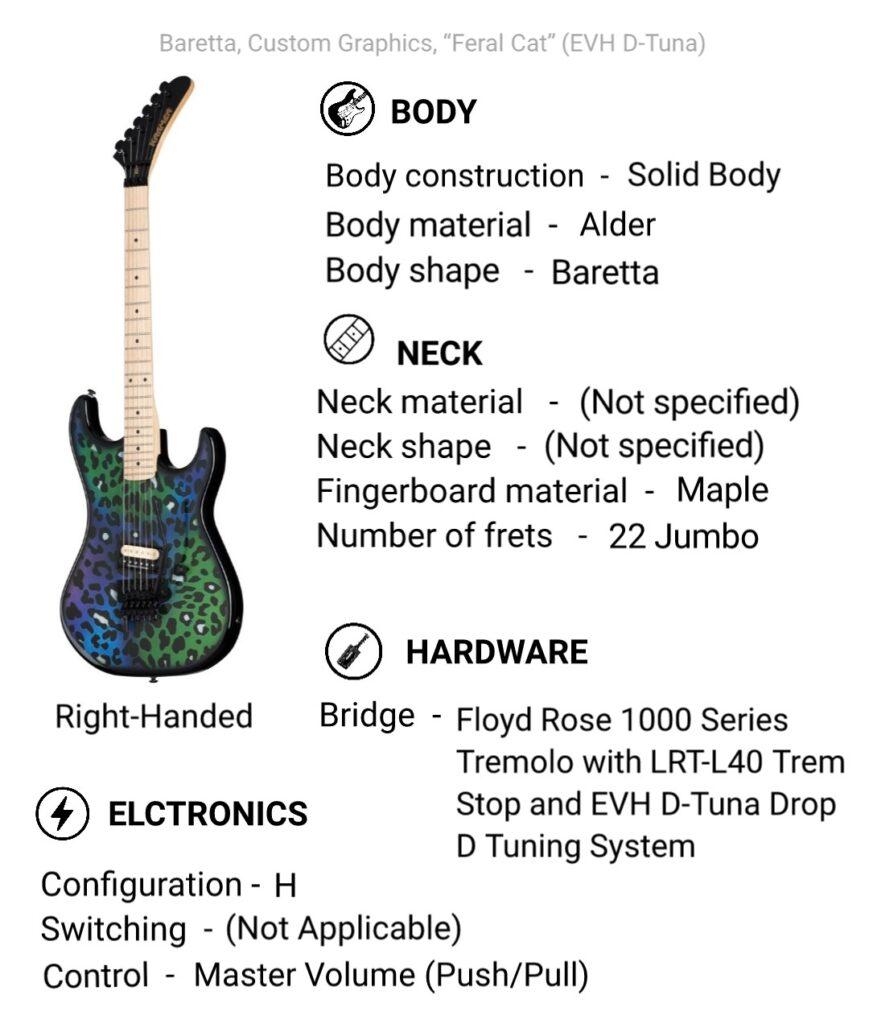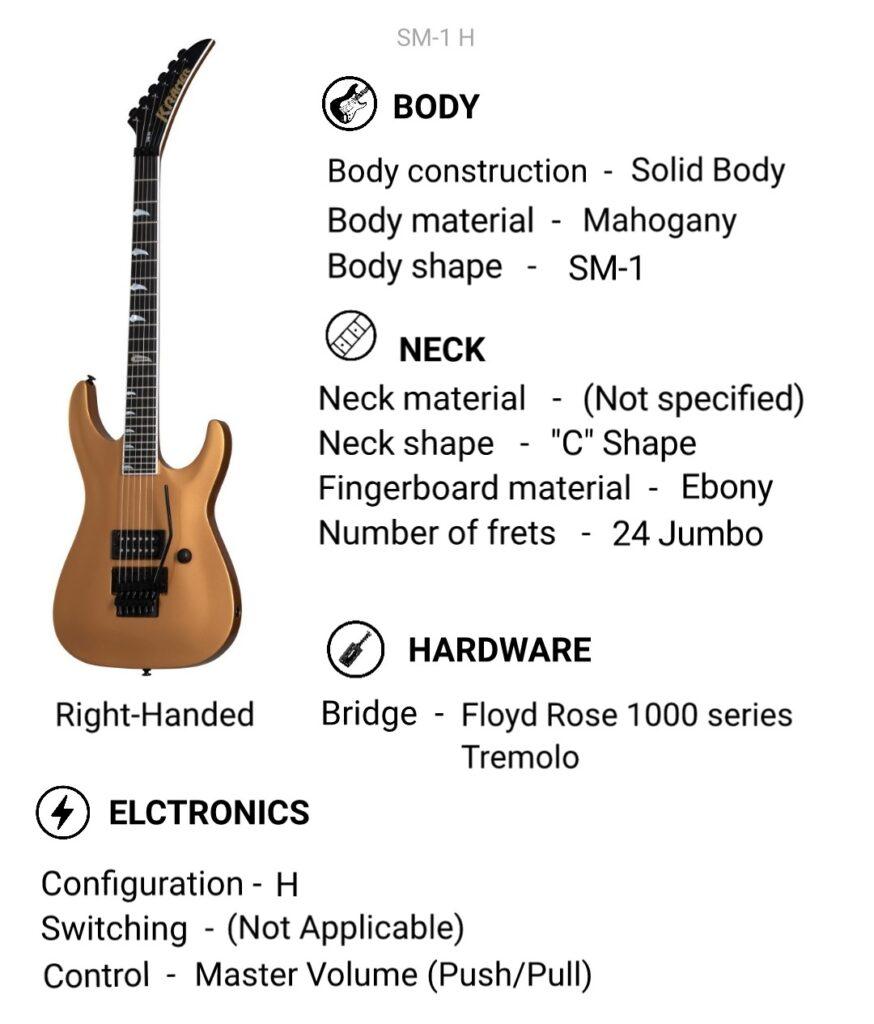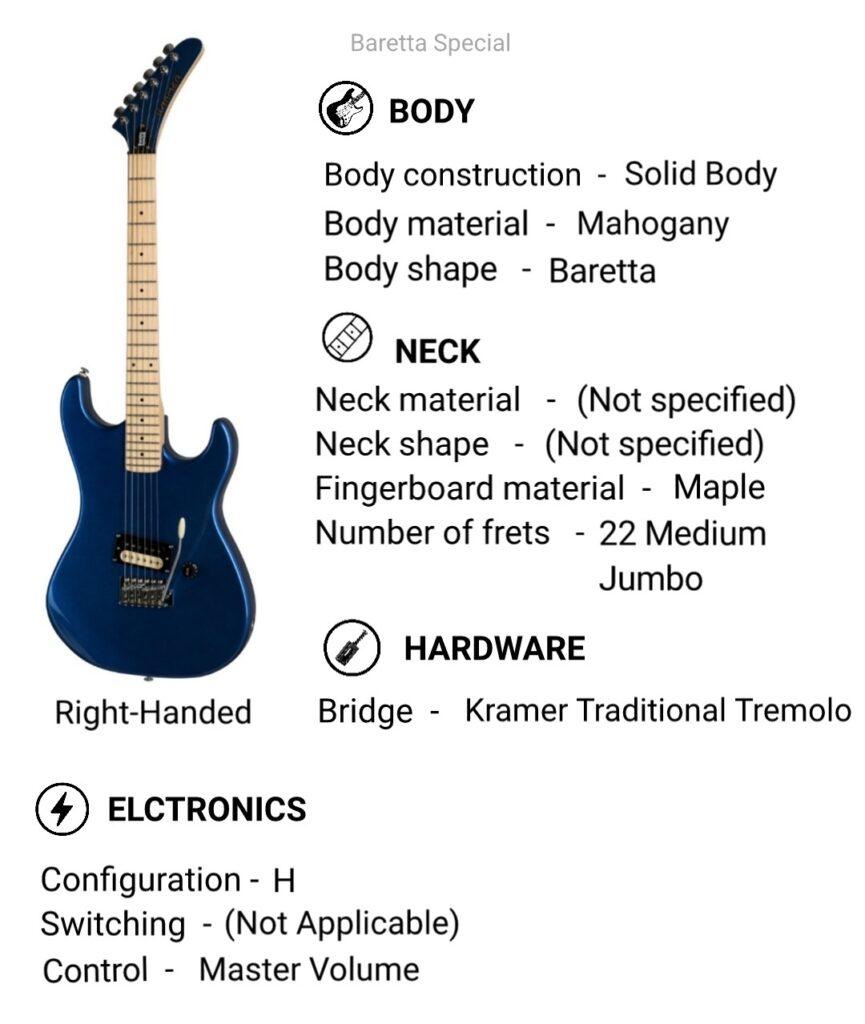List of Best Single humbucker electric guitar with features and specifications, You can compare electric guitar prices on different online stores.
Kramer Baretta Custom Graphics, “Danger Zone” (EVH D-Tuna)
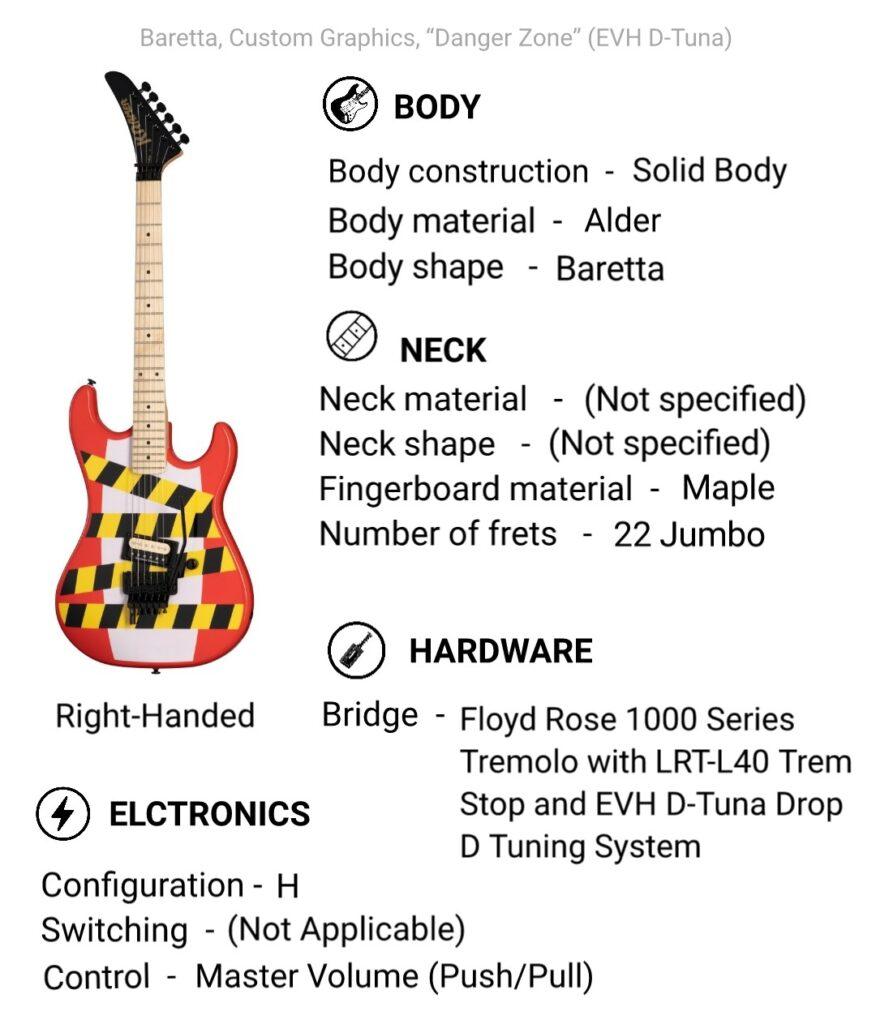
EVH Striped Series
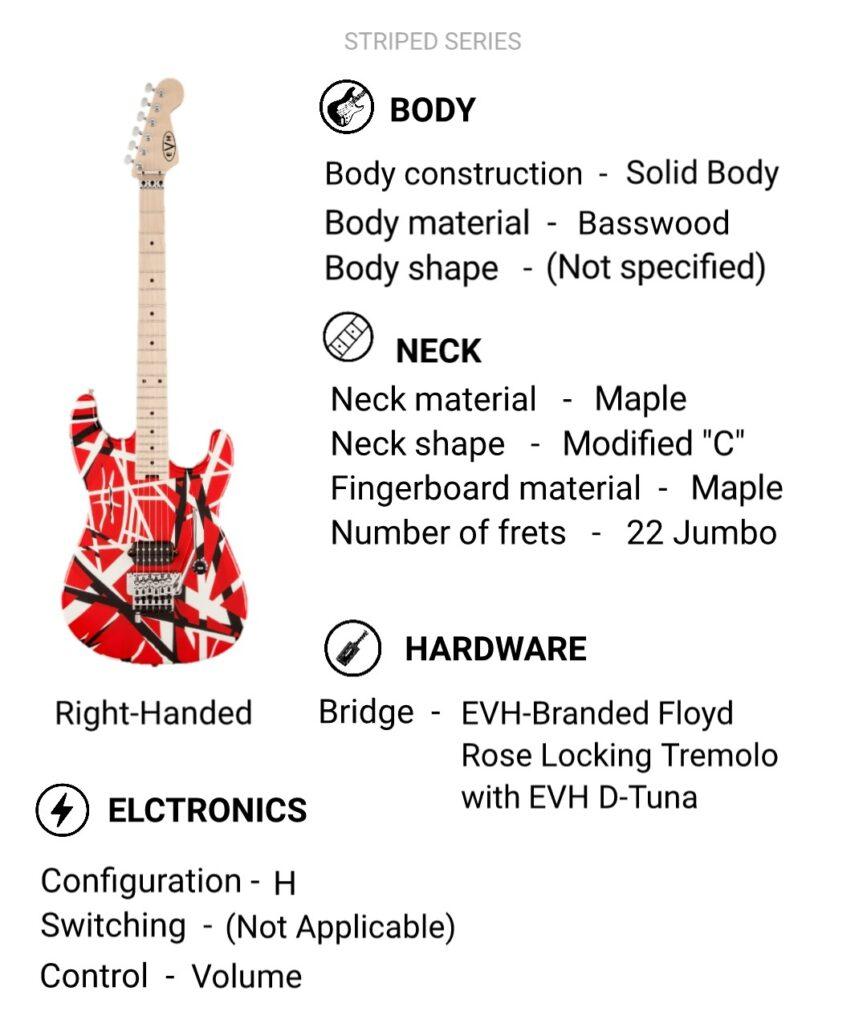
EVH Striped Series 5150
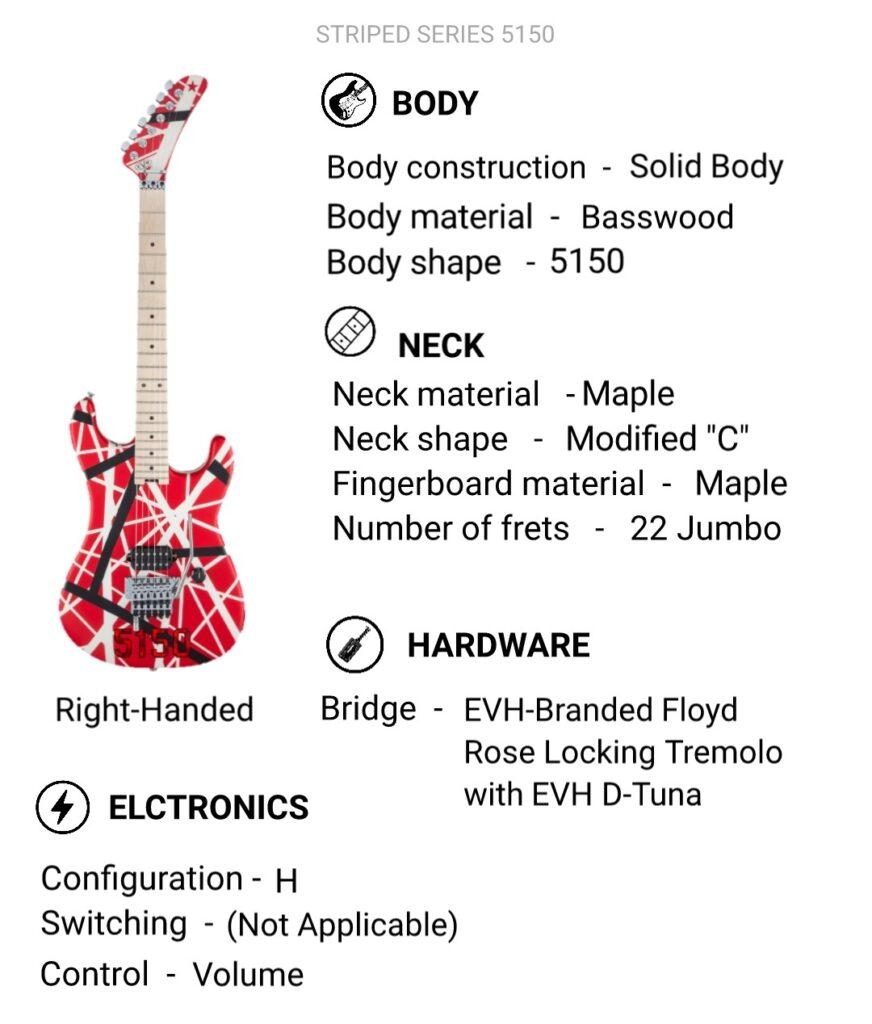
EVH Striped Series Frankenstein Frankie

Introduction: The single humbucker electric guitar, often referred to simply as the “single-humbucker guitar,” is a distinctive instrument known for its simplicity, power, and versatility. Featuring only one humbucking pickup, this guitar design offers a straightforward approach to tone shaping while delivering a wide range of sonic possibilities. Let’s delve into the characteristics, tonal qualities, and popular models of the single-humbucker electric guitar.
”Read_More”
Distinctive Features:
The defining feature of the single-humbucker electric guitar is its pickup configuration, which consists of a single humbucking pickup, typically placed in the bridge position. Unlike guitars with multiple pickups, the single-humbucker design streamlines the instrument’s electronics, resulting in a straightforward control layout and a minimalist aesthetic.
Tonal Characteristics:
Equipped with a humbucking pickup, single-humbucker guitars offer a powerful and full-bodied tone characterized by thick midrange, enhanced sustain, and reduced noise. The humbucker’s dual-coil design cancels out electromagnetic interference, resulting in a cleaner signal with fewer unwanted hums and buzzes. This translates to a tone that is rich, warm, and well-suited for genres such as rock, blues, and hard rock, where punchy rhythm and searing leads are paramount.
Versatility:
Despite having only one pickup, single-humbucker guitars are surprisingly versatile instruments that can adapt to a variety of playing styles and musical genres. While they excel at delivering fat, distorted tones ideal for aggressive riffing and soaring solos, they are equally capable of producing clean, articulate sounds suitable for jazz, funk, and fusion. Players can achieve different tonal nuances by adjusting their playing technique, amp settings, and effects pedals, demonstrating the guitar’s adaptability in diverse musical contexts.
Popular Models:
Several guitar manufacturers offer single-humbucker electric guitars in various shapes, sizes, and price ranges. Iconic models include the Gibson Les Paul Junior, Fender Telecaster Deluxe, and PRS SE One. These guitars feature high-quality construction, player-friendly ergonomics, and dependable hardware, making them go-to choices for musicians seeking a no-frills instrument with uncompromising performance.
Notable Players:
Numerous renowned guitarists have wielded single-humbucker guitars to great effect, showcasing the instrument’s versatility and sonic prowess. Artists such as Billy Gibbons of ZZ Top, Mick Jones of The Clash, and Joan Jett have all embraced the simplicity and power of the single-humbucker electric guitar, incorporating its distinctive tones into their signature sounds.
In conclusion, the single-humbucker electric guitar offers a compelling blend of simplicity, power, and versatility. With its rich, full-bodied tone and minimalist design, this instrument continues to captivate players across genres and generations, proving that sometimes, less is indeed more when it comes to crafting unforgettable music. Whether on stage, in the studio, or at home, the single-humbucker guitar remains a timeless classic beloved by musicians worldwide.
For which Genres of music is the Single-Humbucker pickup configuration suitable?
The single-humbucker pickup configuration is suitable for a wide range of musical genres due to its versatile tonal characteristics. Here’s an explanation of which genres of music this pickup configuration is well-suited for:
- Rock: Single-humbucker guitars excel in rock music, delivering thick, powerful tones that cut through the mix with ease. They are particularly well-suited for classic rock, hard rock, and heavy metal genres, providing the driving rhythms and searing leads that define these styles.
- Blues: The warm and expressive tone of single-humbucker pickups lends itself beautifully to blues music. Whether delivering soulful lead lines or gritty rhythm playing, these pickups capture the nuances and dynamics of blues guitar playing, adding depth and emotion to the music.
- Punk: Known for its raw energy and aggressive sound, punk music often relies on the punchy and distorted tones produced by single-humbucker pickups. These guitars provide the cutting-edge sound and attitude required for punk rock anthems, making them a staple in the genre.
- Alternative: Single-humbucker guitars are also favored in alternative rock and grunge music for their ability to deliver thick, textured tones that complement the genre’s experimental and edgy aesthetic. They are often used to create a wall of sound or to add layers of distortion to the music.
- Fusion: Despite their association with heavier genres, single-humbucker pickups can also shine in fusion music, where versatility and clarity are key. They offer the warmth and sustain needed for melodic soloing while retaining enough articulation for intricate chord voicings and fast-paced passages.
- Indie: In indie rock and indie pop, where a balance of clean and distorted tones is often desired, single-humbucker guitars provide the flexibility to switch between shimmering cleans and gritty overdrive effortlessly. They add character and depth to the music without overpowering other instruments.
- Country and Americana: While not as common in traditional country music, single-humbucker guitars can still find a place in modern country and Americana styles, where players seek to blend vintage tones with contemporary sensibilities. They offer a unique twist on classic country twang, adding a touch of grit and attitude to the sound.
In summary, the single-humbucker pickup configuration is suitable for genres ranging from rock and blues to punk, alternative, fusion, indie, and even certain styles of country and Americana. Its versatility and ability to deliver powerful, expressive tones make it a popular choice among guitarists across a diverse musical landscape.
How to choose right Single-Humbucker electric Guitar
Choosing the right single-humbucker electric guitar requires careful consideration of various factors to ensure it aligns with your playing style, preferences, and musical goals. Here’s a guide to help you make an informed decision:
- Define Your Playing Style: Consider the genres and styles of music you primarily play. Single-humbucker guitars are versatile but often favored for genres like hard rock, heavy metal, punk, and genres requiring high-gain tones. Determine whether you need a guitar tailored to a specific genre or one offering versatility across different styles.
- Pickup Configuration: Single-humbucker guitars feature a single humbucker pickup, known for its higher output, fuller sound, and resistance to noise and interference compared to single-coil pickups. Evaluate the pickup’s characteristics, such as its output level, tonal profile, and versatility. Some humbuckers are designed for aggressive, high-gain tones, while others offer a more balanced sound suitable for various playing styles.
- Tonewood and Construction: Pay attention to the guitar’s tonewood and construction, as they significantly influence its sound and resonance. Common tonewoods include mahogany, basswood, alder, and maple. Each tonewood offers distinct tonal characteristics, so choose based on the sound you prefer. Additionally, consider factors like body shape, neck construction, and scale length to ensure optimal playability and comfort.
- Neck Profile and Fingerboard: Select a neck profile and fingerboard material that feels comfortable and facilitates your playing technique. Neck profiles range from slim and fast to thicker and more substantial. Common fingerboard materials include rosewood, maple, and ebony, each offering different feels and tonal properties. Experiment with different neck shapes and materials to find what suits you best.
- Hardware and Electronics: Assess the quality of hardware components such as tuners, bridge, and controls. Ensure they are durable, reliable, and suitable for your playing needs. Consider additional features like coil-splitting or coil-tapping options, which provide increased tonal versatility by allowing you to switch between single-coil and humbucker sounds.
- Playability and Comfort: Playability is crucial for an enjoyable playing experience. Evaluate factors like fretboard radius, fret size, and overall ergonomics to ensure the guitar feels comfortable to play for extended periods. Smooth fretwork, easy access to higher frets, and a well-balanced weight distribution contribute to overall comfort and ease of playing.
- Budget and Value: Determine your budget and explore options within your price range. Single-humbucker guitars are available at various price points, from budget-friendly models to high-end instruments. While budget guitars offer excellent value for beginners, investing in a higher-quality instrument with premium features may provide better long-term satisfaction for experienced players.
- Test and Compare: Whenever possible, try out different single-humbucker guitars at a music store to assess their sound, playability, and build quality. Compare multiple models, brands, and configurations to find the guitar that best suits your preferences and playing style.
By considering these factors and testing out various single-humbucker electric guitars, you can choose the right instrument that meets your needs and inspires you to create music.
Pros and Cons Single-Humbucker electric Guitars
Pros:
- Powerful Tone: Humbuckers deliver a thick, warm, and powerful tone that’s ideal for genres like hard rock, heavy metal, and blues. They offer high output and excellent sustain, making them well-suited for lead guitar playing.
- Noise Reduction: Humbuckers are designed to cancel out electromagnetic interference, resulting in reduced noise and hum compared to single-coil pickups. This makes them a preferred choice for high-gain and distorted tones.
- Versatility: While known for their high-gain sound, single-humbucker guitars can also produce clean tones with warmth and clarity. Many models feature coil-splitting or coil-tapping options, allowing players to achieve single-coil-like tones for added versatility.
- Simplicity: Single-humbucker guitars are straightforward and easy to use, typically featuring minimal controls and switching options. This simplicity can be appealing for players who prefer a no-nonsense approach to tone shaping.
- Distinctive Look: The single-humbucker configuration often results in a sleek and minimalist appearance, giving guitars a distinctive aesthetic appeal.
Cons:
- Limited Tonal Options: While versatile, single-humbucker guitars may not offer the same range of tonal options as guitars with multiple pickups. Players who require a broader sonic palette for different musical styles may find single-humbucker guitars somewhat limiting.
- Lack of Pickup Blending: Unlike guitars with multiple pickups, single-humbucker guitars typically do not allow for blending or mixing different pickup combinations. This means players may have fewer options for adjusting their tone on the fly.
- Reduced Articulation: Humbuckers, by design, can sometimes sacrifice a bit of the clarity and articulation found in single-coil pickups. While great for high-gain applications, they may not provide the same level of detail and note separation in clean or lightly overdriven tones.
- Less Traditional Tonal Character: Some players prefer the distinctive twang and sparkle of single-coil pickups, which are not typically found in single-humbucker guitars. Those seeking a more traditional or vintage tone may find single-humbucker guitars less suitable for their needs.
Despite these potential drawbacks, single-humbucker electric guitars remain popular among players seeking a powerful and focused tone for rock, metal, and other high-gain genres. With their simplicity, versatility, and distinctive sound, they continue to be a favorite choice for many guitarists.
History of Single-Humbucker electric Guitars
The history of single-humbucker electric guitars is closely intertwined with the evolution of electric guitar design and the quest for powerful, high-output tones. Here’s a brief overview:
- Emergence of Humbucker Pickups: The humbucker pickup, initially developed by Gibson in the 1950s, was created as a solution to the inherent noise and hum issues associated with single-coil pickups. By using two coils wound in opposite directions and connected out of phase, humbuckers effectively canceled out the unwanted noise while retaining the desirable characteristics of single-coil pickups.
- Rise of Rock and Heavy Metal: As rock music evolved in the 1960s and 1970s, and especially with the emergence of heavy metal in the 1980s, the demand for guitars capable of delivering high-gain tones increased. Single-humbucker guitars became popular among rock and metal guitarists for their ability to provide thick, saturated tones ideal for aggressive riffing and soaring solos.
- Innovations and Modern Designs: In recent years, guitar manufacturers have continued to innovate and refine the single-humbucker concept. Many modern single-humbucker guitars feature coil-splitting or coil-tapping options, allowing players to achieve a wider range of tones by switching between single-coil and humbucker modes. Additionally, advancements in pickup technology and guitar design have led to the creation of guitars with enhanced playability, versatility, and tonal options.
Overall, single-humbucker electric guitars have played a significant role in shaping the sound of rock, metal, and various other musical genres. With their powerful, high-output tones and distinctive character, these guitars continue to be a staple choice for players seeking a focused and aggressive sound.
”Read_Less”


